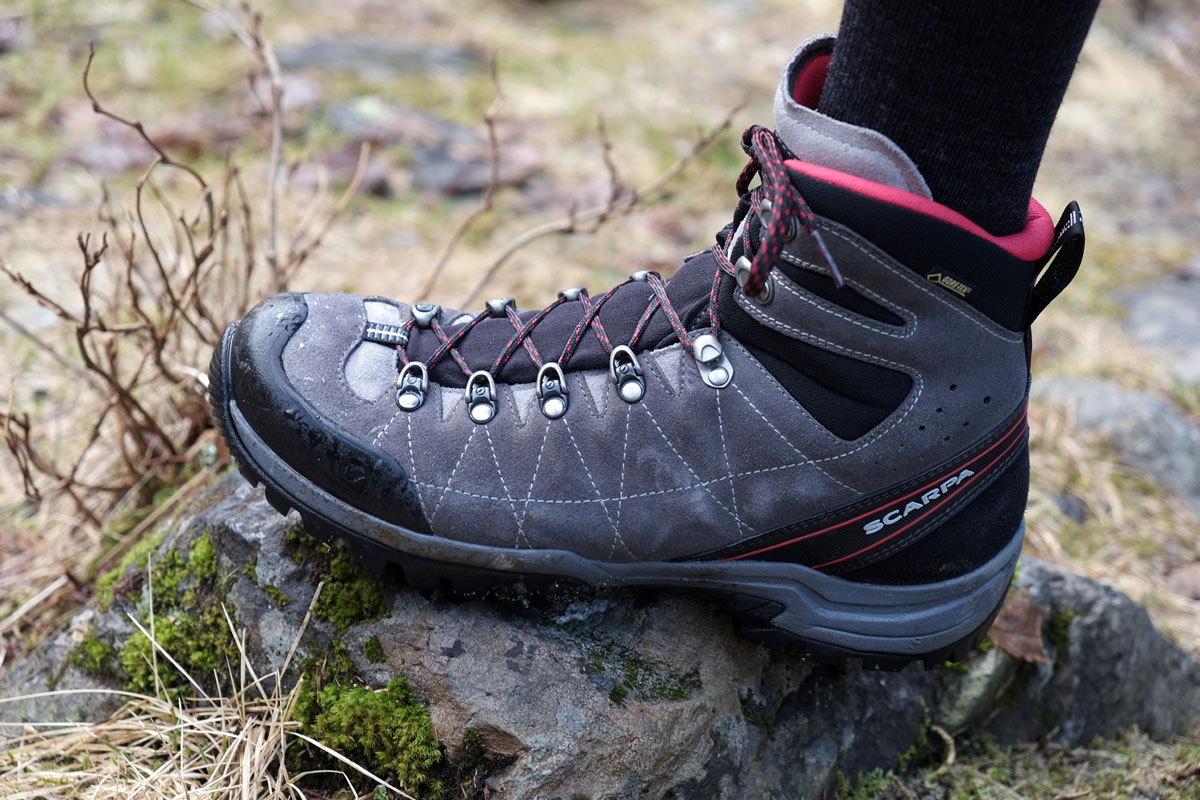
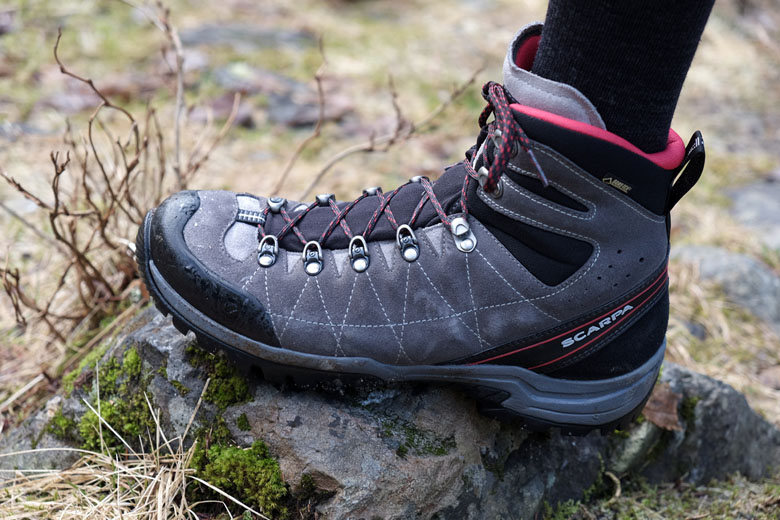
Switchback Travel


Switchback Travel
Lightweight backpacking boots are a big ticket item these days, as hikers of all kinds appreciate the benefits of cutting a pound or two off their leaden feet. Scarpa’s entry into this category is the boldly named R-Evolution GTX. We gave the Scarpa’s an extended test, taking full advantage of the mild winter of 2015 in the Pacific Northwest, and mixed in a multi-day backpacking trip in Utah. In the end, we came away quite impressed. The Scarpa’s stand out in a pretty crowded segment thanks to their superior, stretchy fit and solid underfoot support. Below we break down the R-Evolution's traction, waterproofing, durability, sizing and fit, and more. To see how they stack up, see our comparison table and article on the best hiking boots.
Straight out of the box, we were very impressed with the stable feel of the Scarpa R-Evolution GTX. For such a lightweight boot, they are very solid, particularly underfoot. This can be attributed to a wider base and a more substantial midsole. Expect a little more break-in time than a typical midweight boot, but after a couple casual day hikes, everything was feeling great for us.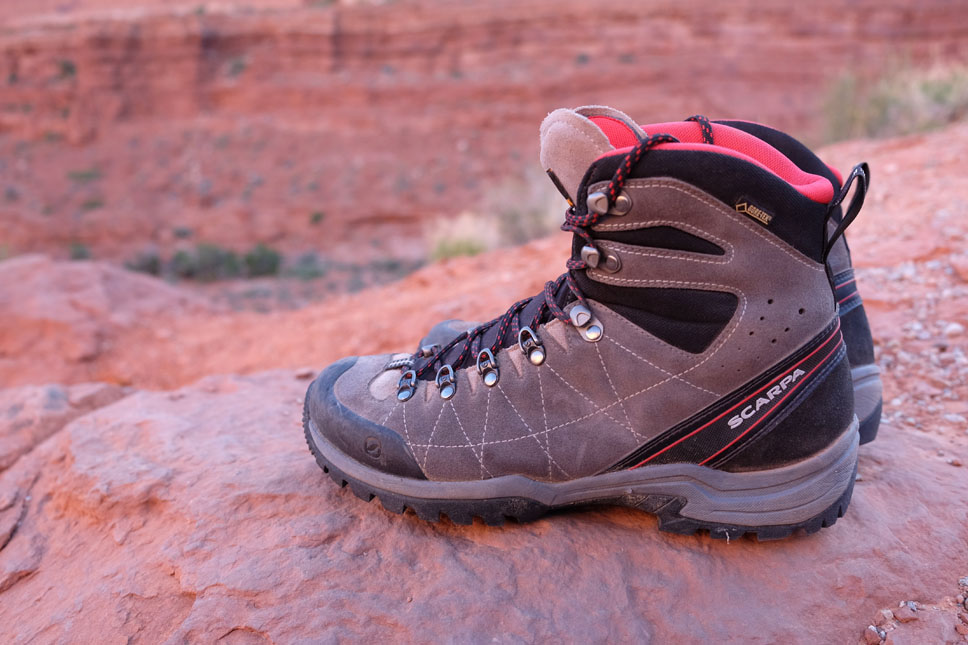
The stiffer construction really is appreciated on longer climbs with a loaded down backpacking pack. The boot feels much like a lightweight alpine shoe in these instances, helping keep your heel from dropping excessively on long upward grades. For us, this stiffer setup was greatly appreciated while backpacking with a heavy load in Utah when water sources are scarce and it’s necessary to carry everything to the campsite.
The chunky square lugs are tightly spaced toward the toes and ball of the foot, and are wider under the heel. This design contributes to excellent grip on dry rock on the ascents and reliable braking on descents. We did have one particularly muddy hike where we felt the lugs could have shed the muck better, as they caked up more than we prefer. The Salomon Quest 4D 2 GTX that we had along for comparison (see the in-depth review) were marginally better performers in the same conditions. Beyond that, we found the Vibram outsoles to be reliable partners in both the wet and dry.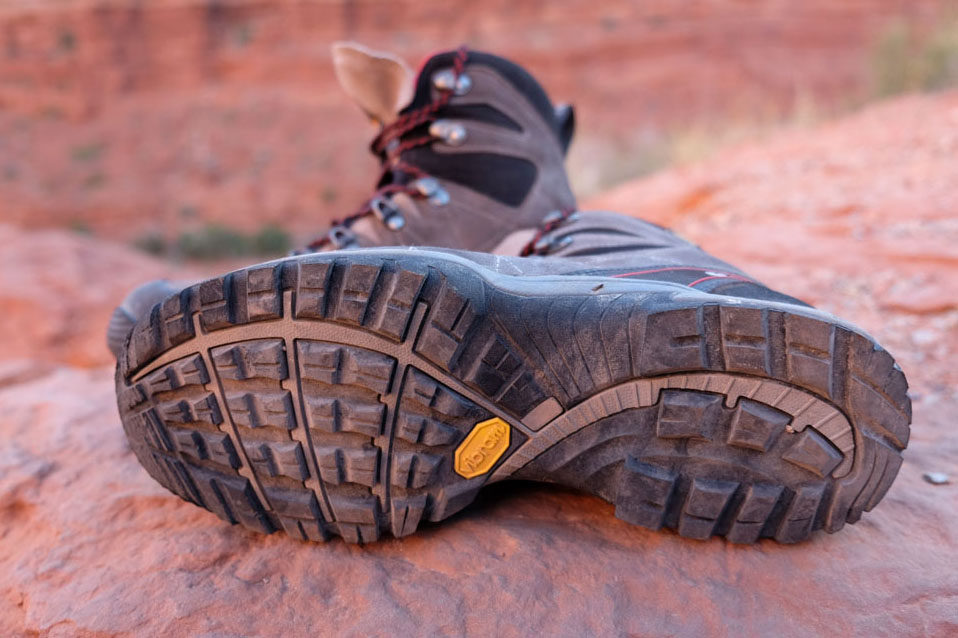
Gore-Tex liners are nearly ubiquitous in the backpacking boot market thanks to their high-end and long-lasting performance. The experience with the R-Evolutions is no different, further aided by a really effective DWR coating. As rain fell on our early-season hikes, the boot’s water-resistant finish was on full display, shedding drops much like a rain jacket. And the inevitable in-trail streams and water crossings exposed no weaknesses in the design. This is all no big surprise coming from the company that was the first to build a Gore-Tex boot.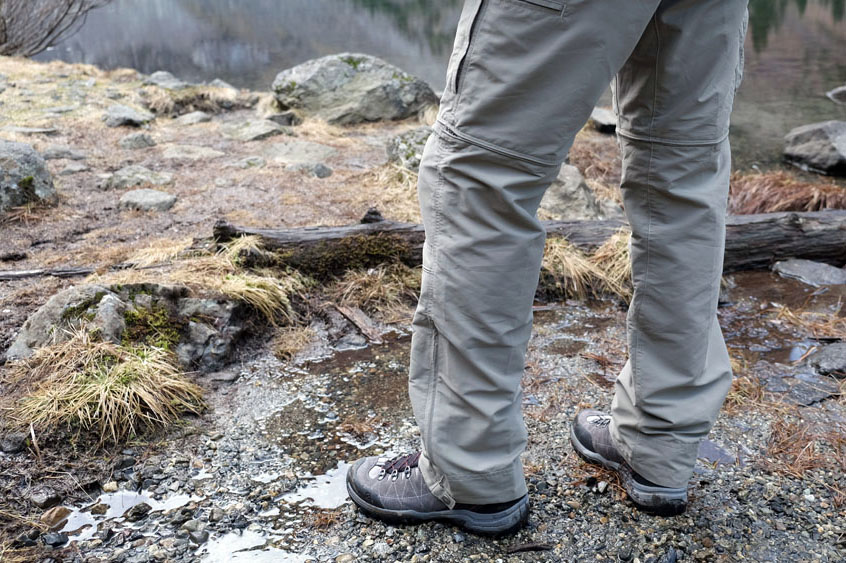
A waterproof liner and leather upper construction is rarely a recipe for excellent ventilation, but after 3-days worth of backpacking in 80-degree weather in Canyonlands, we were quite impressed. The combination of a relatively thin upper as well as the breathable stretchy fabric along the top of the foot combines to keep everything reasonably cool. The Arc’teryx Bora2 we tested in the same environment edged it in breathability, but not by much.
Made in Romania, as the tongue of the boot proudly displays, the R-Evolution’s have a high-end feel to them, and their performance has backed that up well. The suede upper was no worse to wear after being subjected to continued abuse on rocky trails, and the interior lining of the boot remains in great shape.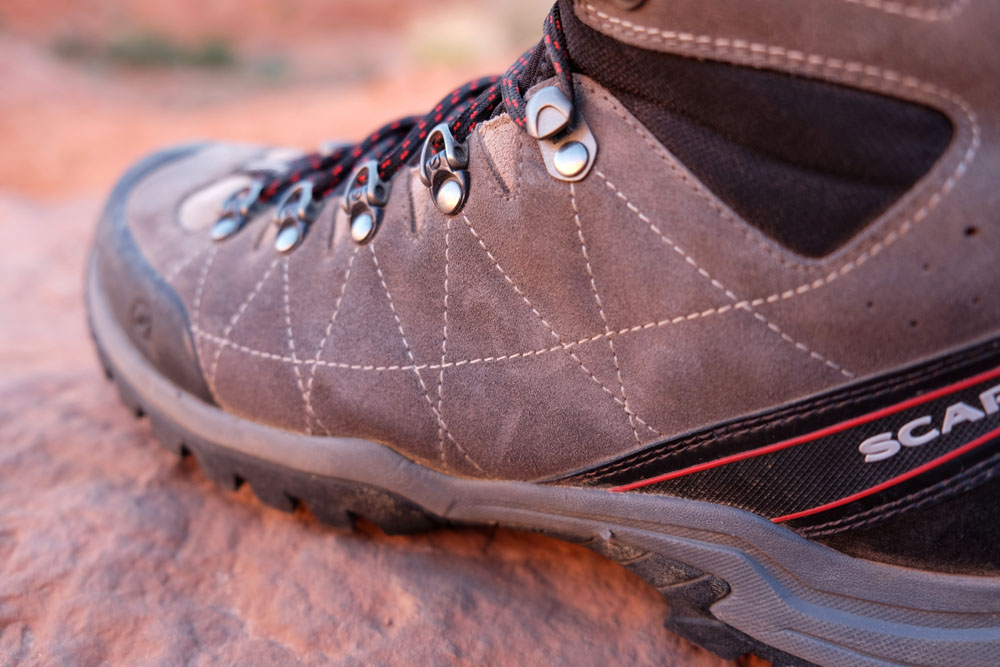
Our only complaint is the laces strike us as too thin and are prone to slipping. We found ourselves having to retighten them on occasion on the trail, and they aren't particularly confidence inspiring when you pull hard. Time will tell if they stand up long term. Outside of our concerns about the laces themselves, the lacing hardware is high quality and the stitching throughout the boot is straight and free of defects.
A very prominent toe cap offers solid protection, and extends well beyond just the toes. The look is quite similar to an approach shoe or a number of current lightweight hikers, but in this case with a solid TPU casing. Heel protection is also formidable, and we experienced absolutely zero issues throughout the testing period. The stretchy fabric and memory foam filling that covers the foot’s instep continues around the ankle. And although the cushion isn’t particularly thick, the high-density foam has sufficient padding for off-trail scrambling.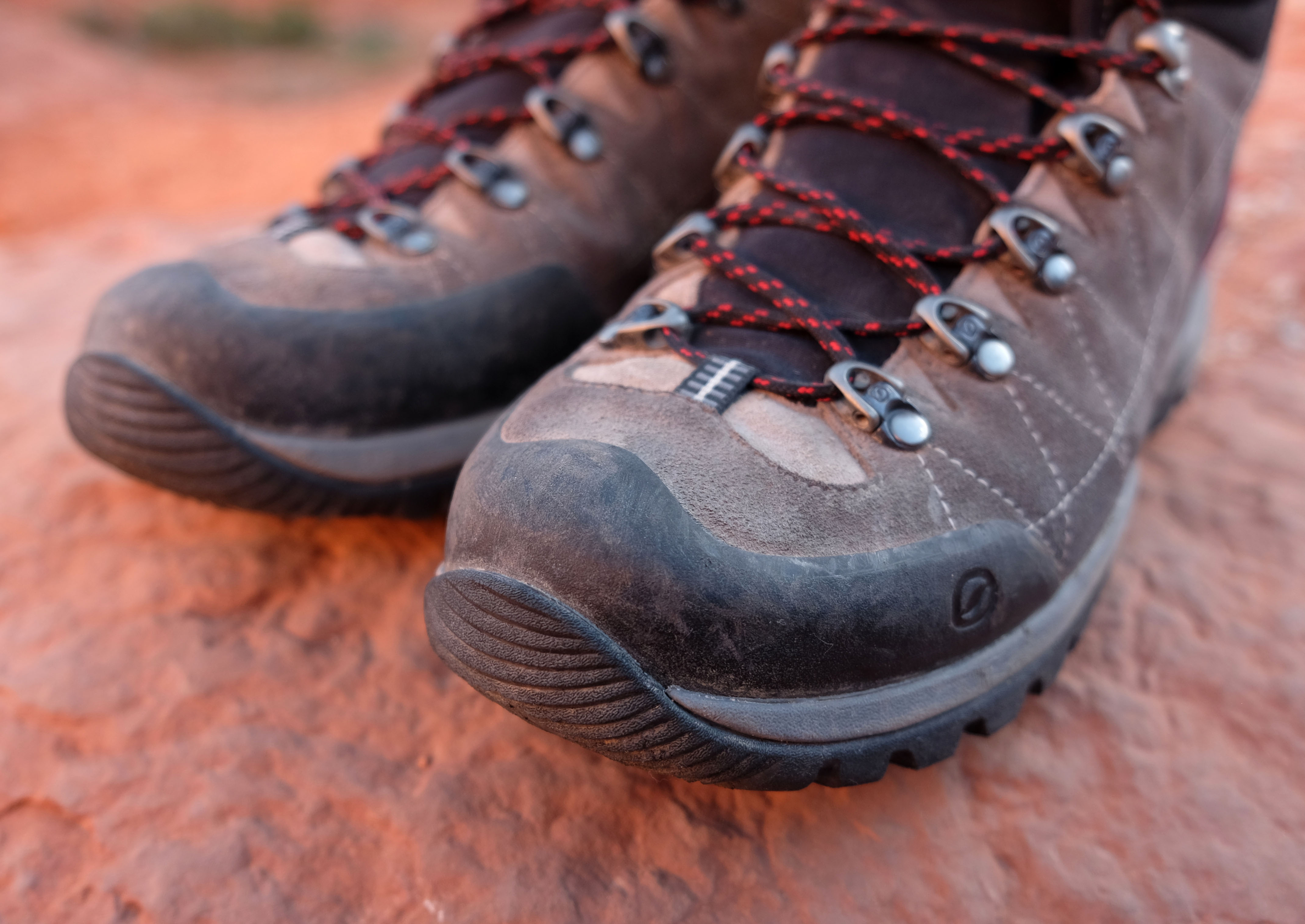
Weighing just under 3 pounds in a size 9, the R-Evolutions land on the lighter end for a true backpacking boot, and within 0.5 an ounce of the updated Salomon Quest 4D 2’s on our scale. The comparison with the Salomon’s is an interesting one, because while they weigh nearly the same, the feel is quite different. Whereas the Quest boot has an aggressive stance and feels lighter on the feet, the R-Evolution is more substantial underfoot and has a nicer fit. Same weight, different focus.
You don’t give a boot a name like R-Evolution without something big to offer. In this case, it’s Scarpa’s Sock-Fit design, intended to cosset the foot in glove-like comfort. To pull this off, Scarpa replaced the traditional tongue with a stretchy fabric that’s filled with memory foam, and then stitched it directly to the boot’s upper. The end result is absolutely zero material bunching along the top of your foot when you lace up, and a very comfortable, close fit. The stretchy Schoeller fabric also enables you to tighten the laces a bit more than usual without the feeling of being pinched—a bonus over technical terrain. 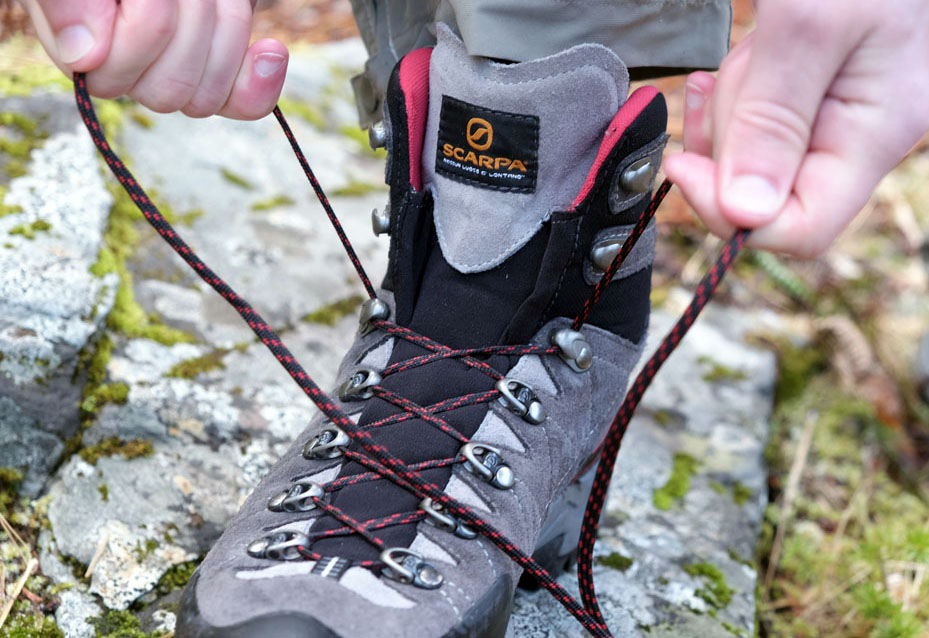
The actual fit of the boot is fairly average, with length about as expected in our normal hiking boot size. The heel is marginally wider than some other boots that we’ve tested, including the new Salomon Quest 4D, but it is definitely not excessively big for your average width foot. The aforementioned Sock-Fit proved a big helper after a long day on the trail, stretching to accommodate our swollen paws.
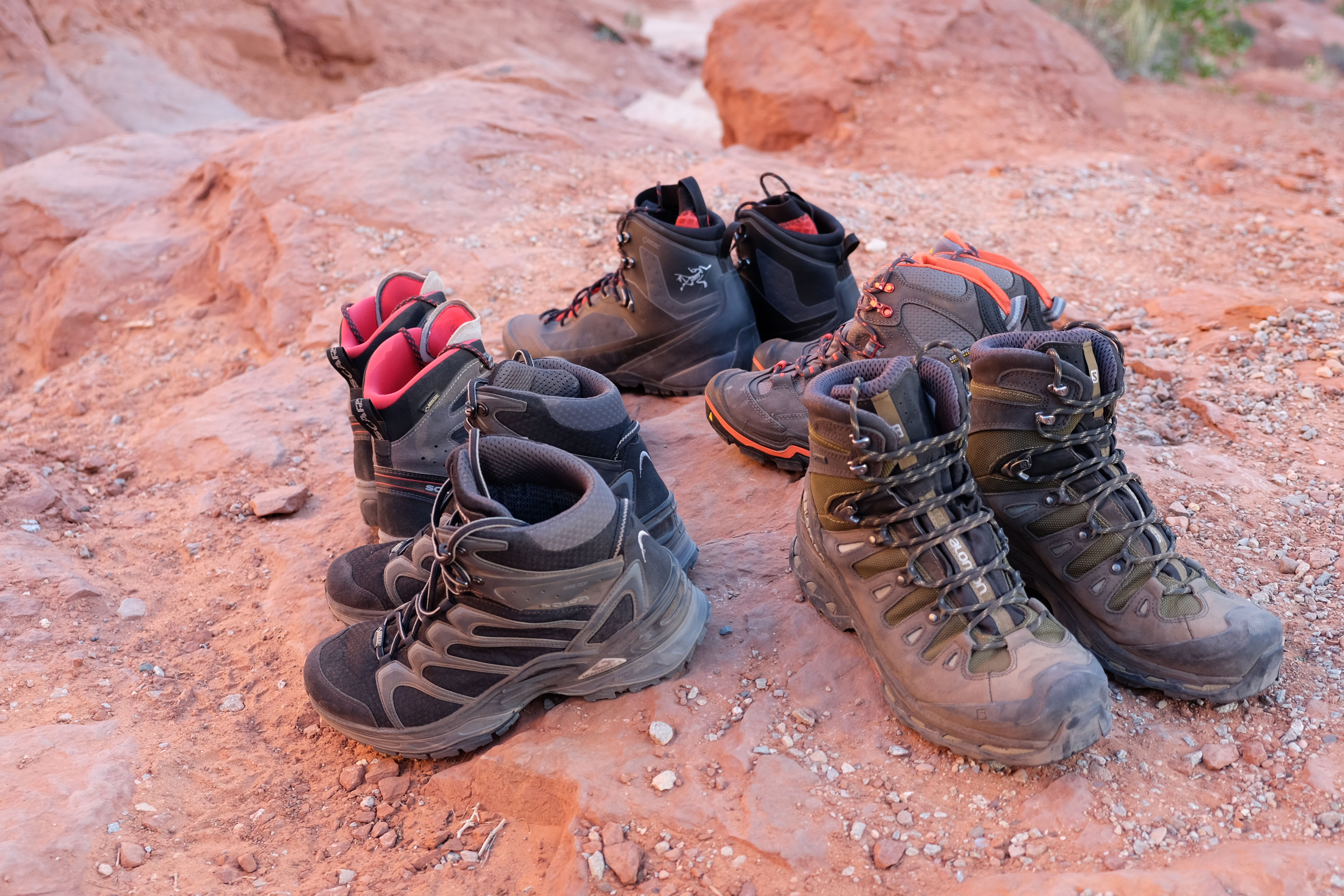
| Boot | Price | Category | Weight | Waterproof | Upper |
|---|---|---|---|---|---|
| Scarpa R-Evolution GTX | $239 | Midweight | 2 lb. 14 oz. | Yes (Gore-Tex) | Suede leather |
| Salomon Quest 4D 2 GTX | $230 | Midweight | 2 lb. 13 oz. | Yes (Gore-Tex) | Nubuck leather / mesh |
| Lowa Renegade GTX Mid | $230 | Midweight | 2 lb. 7 oz. | Yes (Gore-Tex) | Nubuck leather |
| Vasque St. Elias GTX | $199 | Heavyweight | 3 lb. 1 oz. | Yes (Gore-Tex) | Nubuck leather |
| Asolo Fugitive GTX | $240 | Heavyweight | 3 lb. 1 oz. | Yes (Gore-Tex) | Suede leather / nylon |
Once you clear $200 for a pair of hiking boots, there are certain expectations: quality construction, solid performance for both day hiking and backpacking, and comfort. The R-Evolution checks all the right boxes here, and based on our rigorous 3 months with the boots and Scarpa’s solid history of making quality footwear, we have a lot of confidence they’ll last.
The $230 to $240 price range is chock full of tough competition, with well-established and very popular boots, including the Salomon Quest 4D 2 GTX, Lowa Renegade GTX and Asolo Fugitive GTX. And while each of these boots has a specific appeal—for example, the Salomon’s are essentially a trail runner merged with a burly boot—they all share a few common characteristics: surprisingly lightweight for the level of support, traction and comfort. The R-Evolutions slot really well into this grouping, ending up on the more supportive and stiffer end of the spectrum, as well as, in our opinion, with a best-in-class fit thanks to the stretchy and smooth material around the top of the foot and ankle.
The R-Evolution is available in both men’s and women’s sizes, and for 2016 received a minor update in the color scheme, but otherwise remains the exact same boot. With the release of the standard R-Evolution in 2015, Scarpa did also launch a “plus” version. This boot is $40 more expensive, and swaps the suede upper for Nubuck leather. Arguably, the Nubuck is more durable, but we don’t see much of a reason to pay for the upgrade as our suede model has held up exceptionally well. Outside of the difference in the boot’s upper material, the R-Evolution Plus GTX shares the well-received Sock-Fit lining and grippy Vibram outsole.